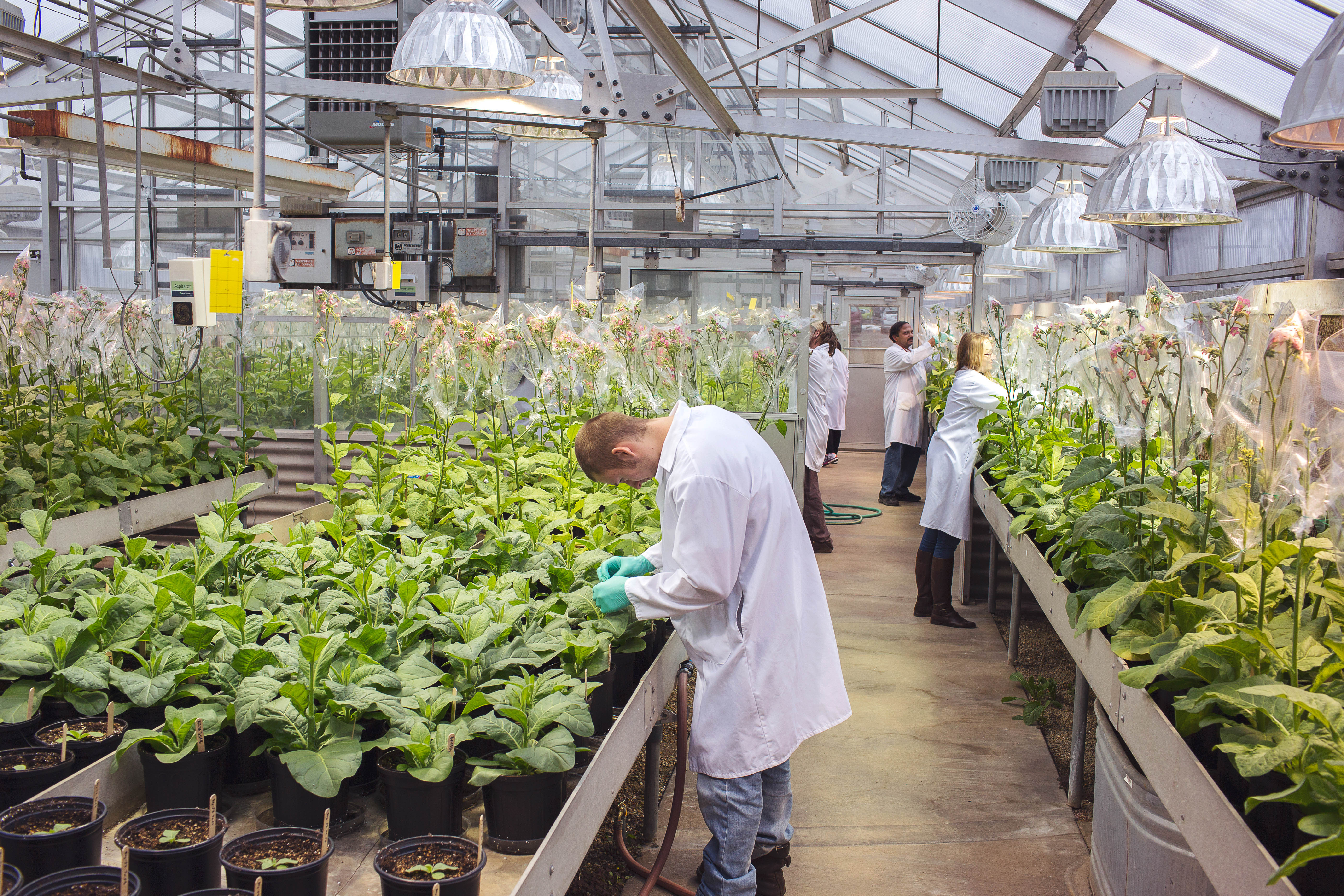RIPE researchers bring new life to campus greenhouse
Situated next to the University of Illinois’s Plant Core Facility on Dorner Drive, a once state-of-the-art controlled environment greenhouse and laboratory sat unused until now.
Researchers from Realizing Increased Photosynthetic Efficiency (RIPE), a project funded through the Bill and Melinda Gates Foundation, retrofitted the facility, starting in December and finishing last month. It will be used to test plants to optimize their photosynthetic efficiency, said Steve Long, research leader for the project and plant biology and crop sciences professor at Illinois.

“Once again, we have a fully contained facility with every modern environmental sensing and control feature, enabling us to test the many genetic variants in photosynthesis,” Long said. “It is already housing over 1,000 tobacco variants.”
The ultimate goal of the project is to increase yields in major food crop varieties used by some of the poorest farmers in the world, primarily in sub-Saharan Africa and Southeast Asia. This includes rice and cassava.
Despite not having been occupied in a few years, field trials manager for RIPE David Drag, who led the repair efforts, said the facility was in good shape, having been used by USDA’s Agriculture Research Service a few years ago to do nematode research. The Service is collaborating with U of I and several other institutions on the RIPE project.
After a quick turnaround on cleaning and minor repairs, the newly revitalized greenhouse is ready for cutting-edge research. It consists of three large bays and a lab, with close to 300 tobacco plants in each. Long explained that since genetic changes are easier to make to tobacco, they’re using the plant as a “test-bed.”
“Once we have identified the best, we will undertake the much more difficult task of introducing the same genetic change into rice and cassava,” he added.
By 2050, the world’s population is expected to rise by about 34 percent, mostly in developing countries. The Food and Agriculture Organization also projects that 80 percent of the needed increase in food production for this population expansion needs to come from increasing yields per acre. This is because there isn’t much more suitable farmland that hasn’t already been tapped into. Additionally, valuable farmland is being lost to urban expansion and drought.
“That’s where the RIPE Project comes in,” explained Wanne Kromdijk, a postdoctoral researcher who tests tobacco varieties in the greenhouse for the project.
Kromdijk is interested in relaxing a plant’s photoprotective mechanisms, which he called “overprotective.” During peak lighting conditions, plants get bombarded with too much light, and just as too much light can bleach hair, it also bleaches leaves, destroying the chlorophyll pigment that makes them green and traps light energy for photosynthesis.
The plants have a mechanism that helps to dissipate this excess of sunlight as heat, to protect the chlorophyll. However, as peak lighting conditions wane, the plant is slow to go back to normal, and so it continues to convert the light to heat, even when it could use it for photosynthesis. By speeding up the transition, Kromdijk hopes to maximize the amount of time photosynthesis is working unhindered, which will lead to an increase in yield.
Supercomputer simulations done at the U of I have suggested this could increase photosynthesis and productivity by as much as 30 percent. Kromdijk is looking for practical ways to make the prediction a reality.
He is using the greenhouse to grow lines that carry traits to allow this. “On the table, we’re looking at whether any of these plants carrying different traits stand out in terms of growth,” Kromdijk added.
The lines were developed through a collaboration between other RIPE researchers at Illinois and the project’s partner institutions around the globe, in this particular case, UC Berkeley. As the project progresses more lines that affect different aspects of photosynthesis will be tested.
Long said because the greenhouse can grow plants year-round, it is used to narrow down which plants are the most promising. From there, they plant several plots of the most promising variant in field trials over the summer.
“We now have the optimal growing conditions and space to do this,” Long said, adding that with about 60 researchers and seven partner institutions, RIPE is going to need it.
With new fans installed, repaired controls, and functioning lamps, Drag and Kromdijk said they’re eager to continue growing and field testing plants that optimize photosynthesis.
“We needed this space,” Drag said. “This is just perfect for what we need to do. I couldn’t imagine anything better.”
By: Austin Keating || Carl R. Woese Institute for Genomic Biology
